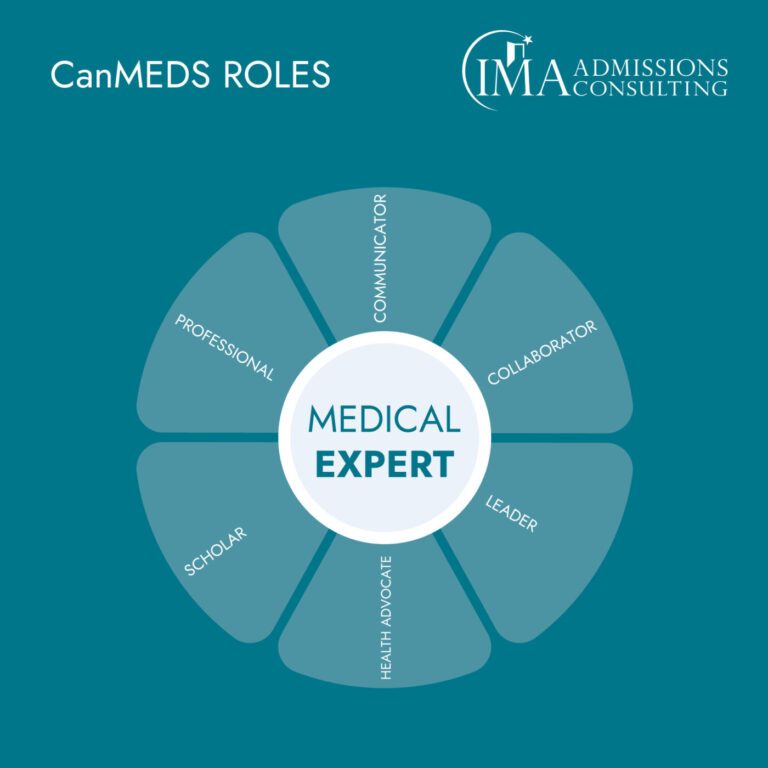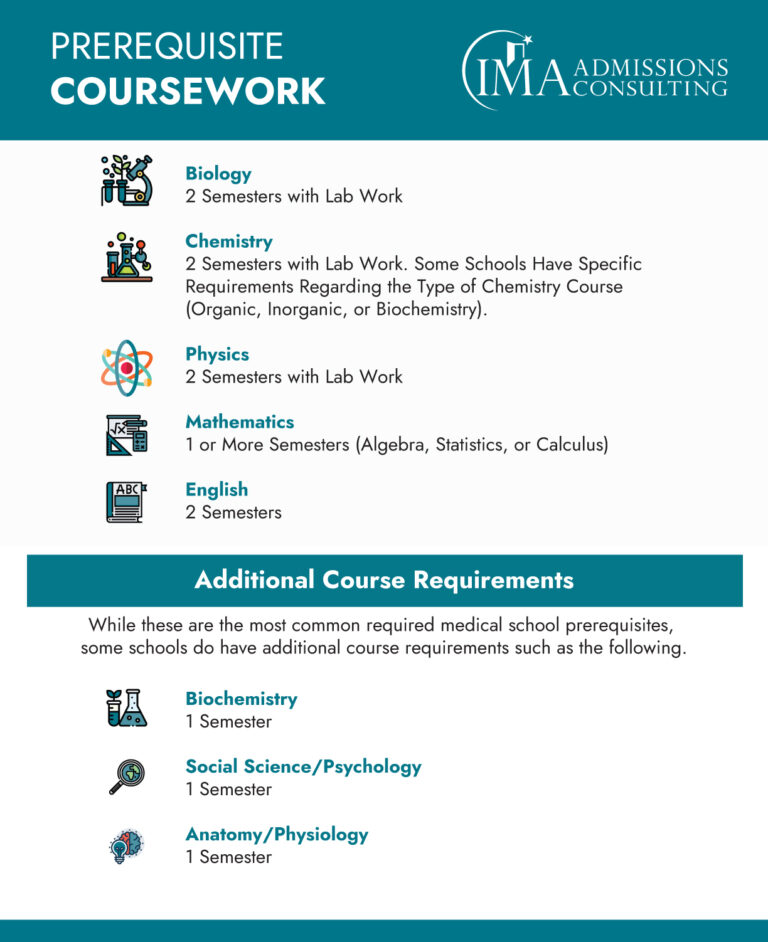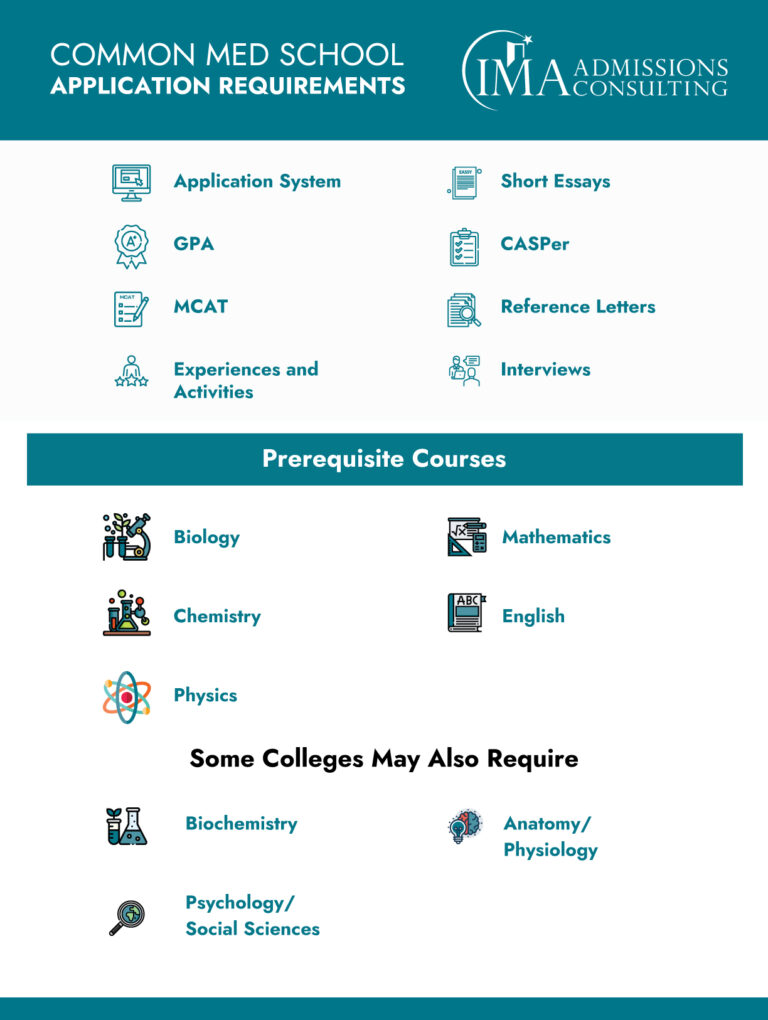Admission Statistics for Medical Schools in Canada
| School | Location | Acceptance Rate | GPA/MCAT Average | Language of Instruction | Accepts International Students |
|---|---|---|---|---|---|
| Dalhousie University Faculty of Medicine | Halifax, NS; Saint John, NB | 7.4% | 3.8/507 | English | No |
| McGill University Faculty of Medicine | Montreal, QC | 6.9% | 3.9/not required | English and French | Yes |
| McMaster University Michael G. DeGroote School of Medicine | Hamilton, ON | 3.49% | 3.88/129 (only CARS is considered) | English | Yes |
| Memorial University of Newfoundland Faculty of Medicine | St. John’s, NL | 10% overall | 80% in province, 85% out of province/510 | English | Yes |
| Northern Ontario School of Medicine | Thunder Bay, ON; Sudbury, ON | 4% | 3.82/not required | English, some French | No |
| Queen’s University School of Medicine | Kingston, ON | 1.9% | 3.81/511 | English | No |
| University of Alberta Faculty of Medicine and Dentistry | Edmonton, AB | 9.9% overall, 14.2% in province, 2.1% out of province | 3.85/128.57 (in province), 129.43 (out of province) | English (main campus), French (campus Saint-Jean) | No |
| University of British Columbia Faculty of Medicine | Vancouver, BC; Kelowna, BC; Prince George, BC; Victoria, BC | 10% overall | 88.14% overall/514.49 | English, some French | No |
| University of Calgary Cumming School of Medicine | Calgary, AB | 9.6% overall, 8.7% in province | 3.82/510.21 | English | No |
| University of Manitoba Max Rady College of Medicine | Winnipeg, MB | 18.45% overall | 4.18/512 | English and French (optional Bilingual stream) | No |
| University of Ottawa Faculty of Medicine | Ottawa, ON | 3.5% overall | 70%, B minimum in prerequisites/ not required | English and French (optional French stream) | No |
| University of Saskatchewan College of Medicine | Saskatoon, SK | 18.6% | 75% in province, 85% out of province/ minimum of 492 in province, minimum of 519 out of province | English | No |
| University of Toronto Faculty of Medicine | Toronto, ON | 6% overall | 3.94/ 125 minimum for each section (124 allowed in one section) | English | Yes |
| Universite Laval Faculte de Medecine | Quebec City, QC | 9% | uses CRC/ not required | French only | Yes |
| Universite de Montreal Faculte de Medecine | Montreal, QC | 10.4% | uses CRC/ not required | French | Yes |
| Universite de Sherbrooke Faculte de Medecine et Des sciences de la Sante | Sherbrooke, QC | 7.2% | uses CRC/ not required | French only | Yes |
| Western University Schulich School of Medicine and Dentistry | London, ON | 7% overall | 3.87/ 381/125 minimum in BBFLS, CPBS, and CARS | English | No |
Application Requirements for Med Schools in Canada
As the graphic above shows, there is a vast array of diversity in admission guidelines and application criteria among the 17 medical programs listed. Luckily, there are some organizational similarities in regard to the application process.
One of the few shared application components is the CanMEDS framework, which is a series of roles formulated by the Royal College of Physicians and Surgeons. This framework was designed to help clarify what abilities and qualities are to be cultivated by med students to effectively meet the needs of those they serve. The structure of CanMEDS includes six distinct roles as part of the uniting “medical expert” role. As we further discuss the components involved in Canadian medical schools’ applications, we will make note of how these 7 roles fit into the selection criteria.

Application System
Unlike medical schools in the United States, Canadian med schools do not utilize a standard application service like AMCAS. Colleges in each province, with the exception of Ontario, use school-specific application services, meaning it is vital that students double and triple-check the application timelines for each school they intend to apply to.
Colleges in Ontario use the OMSAS (Ontario Medical School Application System) which does make applying to the 6 med programs in the province easier. OMSAS is an arm of the OUAC (Ontario University Application Centre) that is dedicated to medical schools. Those who have already applied to undergrad in Ontario will have some familiarity with the structure and interface of OMSAS. OMSAS has an array of unique application features, which we have included in the graphic below.

OMSAS: The Inside Guide
- Address Info and Personal Information
Your mailing address is where you physically reside and typically refers to the place where you are living during the school year (September to April). Your home address is like your permanent address and could be where you are based during the school year or your parental address. If you plan on leaving your school address during the summer, remember to tick the “use home address after May 1” box.
- Questions
The questions are:
- Have you ever been enrolled or are you currently enrolled in an MD program at any university? Please indicate the name of the medical school.
- Have you ever failed a year at college or been denied re-admission or required to withdraw?
- Choices
This is the section where you tell OUAC which schools you’d like them to submit your application to. The school choices are: McMaster University, the University of Ottawa, Queen’s University, the Northern Ontario School of Medicine, the University of Toronto, and Western University.
- Sketch
The sketch portion shares a standardized portrait of who you are with the schools you apply to. The sketch takes some time to build properly so it is a good idea to start early. We recommend that students keep a list of what they’ve done with and for whom starting at age 16.
- School Submissions and Referees
The specific needs of each university are satisfied in this section through supplemental questions. Be sure to follow the instructions in this section carefully.
- GPA and MCAT
All you need for this section is your AAMC ID and most recent test date.
- Transcripts and Postsecondary Education
This section includes any post-secondary institutions you have registered at, even if you have not obtained a grade due to a course still being in progress, you canceled the course, or withdrew.
- FAQs
- Can you use the same verifier for multiple sketch entries?
- Can I submit my application before receiving all of my references?
- Can I make changes to a submitted application?
- How do I respond to an offer of admission?
- Conclusion
This process will require several weeks of your time and your patience and attention. If you are unsure about where something fits into the application, consult the provided booklet or email OMSAS/OUAC.
It is also important to note that students will encounter a new application system when applying for residency, CaRMS. Like ERAS in the US, CaRMS uses a structure somewhat similar to the ones used in initial med school applications. While CaRMS isn’t a concern for you if you are pre-med, it is always good to have an idea of the road ahead. Only Canadian citizens and residents are able to participate in CaRMS. Internation students who have a Canadian citizenship or permanent residency are also allowed to participate, but priority is given to those who graduate from a Canadian med school.
Prerequisite Courses
While not all medical schools have specific prerequisite requirements, the majority of them do. For example, both the University of Ottawa and Queen’s University have strict requirements. Meanwhile, the Northern Ontario School of Medicine does not. Instead, they recommend a variety of science and humanities courses that they feel best prepares students for their MD program. The most commonly required prerequisite courses include:

In addition to mandatory med school prerequisites, some colleges list recommended courses, but it is best to treat those as mandatory too—unless you are unable to take the course. This will show medical schools that you took the time to comb through their admission requirements and are detailed oriented. Plus, it will give your application a competitive edge and help you stand out. Another great way to help give your application a competitive boost is by utilizing IMA’s Canadian medical school admissions consulting services and pre-med shadowing study abroad programs.

GPA
As with all graduate and medical schools, Canadian med schools pay close attention to a student’s undergrad performance. When it comes to considering and weighing an applicant’s GPA, there is a wide range of approaches. However, there are some typical trends. The first being that even if a school doesn’t state their GPA cutoff, the admissions committee will still have some level of expectation. Even if you apply to colleges without strict GPA requirements, the college admissions committee will still have some degree of expectation when reviewing your GPA. Medical schools in Quebec use the CRC (Cote de rendment collegial) also referred to as the R score. The CRC is a calculated class standing based on the student’s performance and their performance relative to that of their peers. Although the CRC is more complicated than a GPA score, it still reflects the academic performance of the applicant.
To further put this into perspective, the Max Rady College of Medicine has a GPA threshold that a student must meet for their application to be given further consideration. The University of British Columbia lists this requirement as a percentage, while Laval hinges their decision on the CRC. Students who have higher GPA scores tend to fare better in the application process, but merely having a good GPA does not guarantee that your application will stand out.
This ties into CanMEDS scholar role. Defined as the aspect of physicianship that relies on one’s lifelong commitment to learning and contributing to medical scholarship. Standing out as a strong academic before applying to med school is a good way to help ensure that you will be viewed favorably by the admissions committee.
MCAT
A student’s MCAT score is often weighed alongside their GPA and is the other central quantitative application component. If a student’s GPA is on the lower of acceptable, their MCAT is likely to play a larger role in the committee’s decision and vice versa. While you can apply to some Canadian medical schools without the MCAT, you will most likely need to take this daunting exam before applying to the majority of MD programs. If a school you are applying to does require the MCAT, it is important to check their website to see if they weigh certain sections of the exam more heavily than others. For example, Michael G DeGroote School of Medicine only considers applicants’ CARS scores. Additionally, other colleges like Cumming School of Medicine have an established minimum MCAT CARS score for non-Albertan applicants. This doesn’t mean that you should only focus on the more weighted sections of the MCAT, but it is good to know ahead of time if one or more sections are considered more heavily than the others.
In terms of your application timeline, it is crucial to know when you should take the MCAT exam to ensure that you will receive a good score and that the score will be available in time for the application deadline. You will want to start prepping by checking the current MCAT registration and test dates, then begin to plan your MCAT study schedule about 6 months before your desired test day.
Experiences and Activities
One universal aspect of medical school applications is the activities and experiences section. For United States students, this is the AMCAS Work and Activities section and for Canadian students, this is the OMSAS Sketch. However, each medical school in Canada will have their own version of this as well. Some universities, such as the University of Alberta Faculty of Medicine requires students to complete a personal activities section where they can list their non-academic achievements. The key point of this element is to establish and showcase how you have developed personally and academically.
Students are given a limited number of words/characters to describe the volunteer and work experiences that they have pursued starting around the age of 16 and on. While this timeframe varies from school to school, most universities do want to know what you have been up to since high school and onward. These experiences can include physician shadowing, jobs, leadership roles, and volunteering. In regards to physician shadowing, Canadian med schools do not require shadowing. In fact, the laws in Canada prevent Canadian pre-med students from shadowing patients. If you are a US applicant, you can include this experience on your application.
This portion of your application along with short essays will allow students to dig into the CanMEDS roles. The overall content of this section should be relevant to one’s medical aspirations and other related scientific proficiencies. These will connect to the CanMEDS roles of leader, collaborator, and communicator. Although you should not treat these sections like a checklist, it is always good to have a grasp on the aptitudes that medical school admissions committees are looking for.
Short Essays
Medical school applicants in the United States are required to write a personal statement to provide admissions committees with a short narrative about why they want to become a doctor. The majority of Canadian med schools use short essay prompts to achieve a similar goal. These a more similar to US secondary application essays than personal statements. You will have to be economical in your wording and address the specific questions which may require some creativity when addressing the various CanMEDS roles.
As with the other application requirements, the exact essay type will vary from institution to institution. Some colleges will require a personal statement and special essay for out of province students while others may require you to respond to 4 questions and 4 essays.
The key point here is that there should be minimal overlap between your personal statement and short essay responses. Students need to take their time to craft well thought out responses that address the essay prompt question and provide a clear picture of who they are as a candidate.
CASPer Test
Of the 17 medical schools in Canada, 12 require the CASPer exam. The CASPer exam is a computerized test designed to assess a student’s empathy, ethics, motivations, and communication skills. The exam is typically 100 to 120 minutes in length and is divided into 2 sections. There are 15 situations in which the students are asked to read a prompt and answer a series of questions about the prompt. In the first section of the exam, students will be asked to type their answers. In the second section, they will need to video record their answers. It is important to note that you only have 5 minutes to respond to the 3 questions in the first section and 1 minute to record your answer to each question in the second section.
If the college you are applying to requires you to complete the CASPer exam, it is important to properly prepare for the exam, including answering sample CASPer questions.
Reference Letters
Reference letters also referred to as letters of recommendation are a key application component. Similarly to the other elements, we have discussed, Canadian medical schools’ requirements for reference letters will vary from school to school. For example, some universities will contact your listed references directly and ask them a series of questions. However, the vast majority of med schools stick to the standard written letter format. The general structure for a letter of reference is as follows: 1 to 2 pages that speak to your personality, character, strengths, weaknesses, and goals as a student. Those in Ontario following the OMSAS guidelines will need to have referees answer specific questions using the OMSAS system rather than in letter form. The questions include:
- Would the applicant make a good physician?
- Rate the applicant’s empathy, professionalism, communication skills, and problem solving skills.
- Identify and comment on 1 area of improvement
- Share any other relevant information with the admissions committee
Based on these questions, it is easy to see why choosing the right referee is crucial. Luckily, only faculty that have a positive view of you and your future prospects as a doctor typically agree to write reference letters for you.
Other colleges’ guidelines may require you to source your letters from specific individuals, typically science faculty members. If there is no specific required breakdown for your references, you should aim for at least 1 letter of reference from an academic advisor or instructor.
Interviews
Lastly, but certainly not least, come the medical school interviews. This is often the phase that most students fear. No matter the format—traditional or MMI—the final step in your application process will include some interview questions designed to test your ability to communicate and think on the spot.
The interview portion of the process features the most in-depth evaluation of your CanMEDS roles aptitude. Students should expect questions that will dig into their abilities to communicate, evince their leadership roles, and navigate complex ethical scenarios. Most med schools will list their interview format on their school website, so you should review the college’s website to determine the best way to prepare for the interview process.
After interviewing, if a month or so passes by and you have yet to hear anything from the school, you may want to write your top choice program a letter of intent. Before sending out a letter of intent, it is important to verify that the school accepts such letters.
Strategies for Getting into Medical Schools in Canada
With the vast amount of information to consider, you may be wondering how to make your application stand out among the rest or what you can do during your med school interview to leave the committee impressed. Here are our tips for increasing your chances of acceptance.
Don’t forego academic requirements
While it is true that having a high GPA and MCAT score does not guarantee your acceptance into a school, these scores are vital in ensuring that your application is considered. This is also tied to the residency status and provincial borders of applicants. No matter if you want to cast a wide net or stick to schools in your province, meeting the GPA and MCAT threshold for the schools you want to apply to is essential. If you really want to stand out, we recommend aiming for the percentile or average scores of the previous year’s matriculates.
You could be the perfect candidate for the colleges you are applying to, but if you do not meet the minimum GPA and MCAT requirements, many schools won’t even consider your application. Numbers are not everything, but you also cannot ignore the MCAT and GPA requirements. It is best to err on the side of caution and apply to schools where your scores meet or exceed the set standard.
Consider school preferences and location
Competition for spots in Canadian medical schools is fierce, and the acceptance rates for these schools can be quite intimidating. This is further exacerbated by the fact that many universities give preference to applicants based on provincial borders, language, residency status, and so on. This is why planning where to apply is even more important for those who want to attend a Canadian medical school.
When it comes to selecting a medical school in Canada, you need to be careful and meticulous in your research and review all the nuances that the borders dictate. It is best to choose schools in which you can demonstrate a connection to, whether it be an academic, work, or personal connection.
Research the schools and start your application early
Students who are considering applying to Canadian medical schools need to thoroughly research each school, its requirements, and preferences. You will need to start compiling your school list and application early and consider how you can use application components such as ABS, OMSAS, short essays, activities section, and more.
Not only do students need to acquire the best and strongest recommendations that will highlight their skills and experiences. To best appeal to the college, you are applying to, research their goals, mission statement, and matriculant data. This will help you choose the right skills and best experiences to highlight to give you a competitive edge.
Sounds like a lot of work? That is why starting your application early is crucial. While Canadian medical schools do not have rolling admissions, it is always best to have everything ready early.
General Application Timeline for Canadian Medical Schools
Each college outside of Ontario uses their own timeline, the only differences are the opening and deadline dates. Below we have provided a general timeline, but as always we recommend checking the school’s website for the most accurate information. Keep in mind this timeline is only for MD programs, dual degrees and MD/PhD programs will have different timelines.
June – Applications open for McGill, UBC, Dalhousie, and Memorial University of Newfoundland.
July – OMSAS applications open for med schools in Ontario and the University of Calgary and the University of Alberta
August – Applications open for the University of Manitoba, Universite de Montreal, and University of Saskatchewan
September – Deadline to create your OMSAS account, applications for the University of Sherbrooke open, application deadline for Memorial University, UBC, and Dalhousie
October – Deadline for OMSAS schools, University of Alberta, University of Calgary, University of Manitoba, and University of Saskatchewan
November – Deadline for McGill, Sherbrooke, Laval, and Universite de Montreal, deadline to submit your MCAT scores for OMSAS, verification of application materials begin
December – January – Initial Interview Invites Sent Out
February – April – Interview Season
March – May – Admission Offers Sent Out
June 30th – Deadline to Submit Final Transcripts OMSAS
Canadian Medical Schools Tuition Cost
United States medical school tuition is well-known for being expensive, but luckily for students, tuition for medical schools in Canada is far more affordable—at least for Canadian residents. Below we have provided a table with the most recent tuition estimates for international students, Quebec residents, and Canadian residents.
| School | Tuition |
|---|---|
| Dalhousie University | $23,000 |
| Mcgill University | $17,191.44 for Canadian Residents, $5,508.09 for Quebec Residents, $45,751.86 for International Students |
| Mcmaster University | $25,129.96 for Canadian Residents and $95,000 for International Students |
| Memorial University | $14,250 |
| Northern Ontario School of Medicine | $23,247 |
| Queen’s University | $27,483 |
| University of Alberta | $12,887 |
| University of British Columbia | $19,218 |
| University of Calgary | $17,685 |
| University of Manitoba | $8,360 |
| University of Ottawa | $25,487 |
| University of Saskatchewan | $17,998 |
| University of Toronto | $23,090 for Canadian Residents and $91,760 for International Students |
| Universite Laval | $12,975 for Canadian Residents, $4,157 for Quebec Residents, and $34,561 for International Students |
| Universite De Montreal | $12,800 for Canadian Residents, $4,000 for Quebec Residents, and $30,100 for International Students |
| Universite De Sherbrooke | $12,285 for Canadian Residents, $4,767 for Quebec Residents, and $28,615 for International Students |
| Western University | $26,652 |
Conclusion
The 17 medical schools in Canada share several things from application timelines to utilizing the CanMEDS framework. But, as seen throughout this article, there is quite a bit of diversity amongst the Canadian medical schools which allows you to seek the type of education you want in a variety of environments. The majority of these schools focus on recruiting Canadian residents to join the ranks of their MD programs. This makes it easier for Canadian students to get into these competitive medical schools. While the process of applying to medical schools in Canada may seem overwhelming, with early planning you can succeed.
As always, International Medical Aid is here to help you through the process of selecting and applying to the best medical schools in Canada. Students who need extra guidance about applying to the best Canadian medical schools should consider utilizing our medical school admissions consulting services. IMA’s medical school admissions consulting can help you through every step of the application process. Don’t forget that a key factor in getting into the best Canadian medical schools includes making your application as competitive as possible, and one way you can do so is through our pre-med shadowing study abroad programs.
FAQs
Which medical school in Canada is the hardest to get into?
With an acceptance rate of only 1.8%, Queen’s University is the hardest to get into.
Which medical school in Canada is the easiest to get into?
The University of Saskatchewan is the “easiest” medical school to get into with an acceptance rate of 18%. Keep in mind that all of the medical schools in this article are somewhat difficult to get into, which is why they are considered the best medical schools in Canada.
Is there a central application system for medical schools in Canada?
No, there isn’t a central standardized application system for medical schools in Canada. However, schools in Ontario do utilize the OMSAS service.
Which medical schools in Canada accept international students?
7 of the medical schools in Canada accept international students. These schools are Laval, Memorial, Sherbrooke, McGill, University of Toronto, Universite de Montreal, and McMaster.






